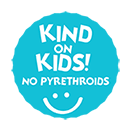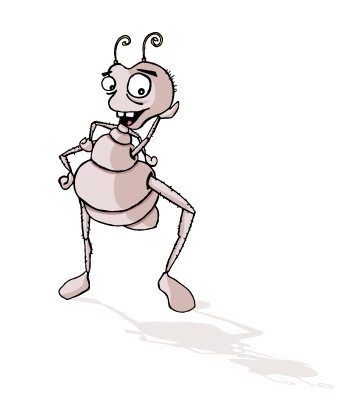
No, head lice are not known to transmit any disease. However infections may result if the skin is broken by repeated scratching.
No. Head lice do not have hind legs, so they are unable to jump. They also do not have wings and cannot fly.
Adult head lice are approximately 2-4mm long.
Adult head lice cannot survive more than 24 hours when removed from a person's head.
Head lice live up to 35 days.
Nits (head lice eggs) take approximately 7-10 days to hatch.
Head lice are tiny parasites that live in your hair. They don’t have any wings so can’t fly and they don’t have hind legs so can’t jump. They like to live in your hair because your hair provides shelter and warmth and they feed on blood from your scalp.
Their colour ranges from semi-transparent (so they appear the same colour as the Host’s hair) to slightly brownish to brown to black. An empty eggshell looks white.
Head lice vary in colour from grey to light brown.
Head lice survive by feeding on blood from the scalp.
Lice eggs are oval in shape and are approximately 1mm long and 0.5mm wide. Their colour ranges from semi-transparent (so they appear the same colour as the Host’s hair) to slightly brownish to brown to black. An empty eggshell looks white.
Head lice are approximately 2-4mm long, grey or light-brown in colour with flattened bodies and 6 legs.
Head lice can only survive on the human head.
Head lice crawl from one head to another when we have our heads in very close contact to another person.
Check with a head lice comb under a good source of light. If a live louse is detected, then treatment is required.
Having head lice is nothing to hide or be ashamed of. Head lice are very common and most people experience head lice at least once during their lifetime. It is important to inform the school, childcare centre or playgroup where your child attends when you experience a head lice infestation. This will enable them to check all close contacts and introduce treatment when necessary. This can also prevent a re-occurrence of head lice and may save you the time and effort of further treatments.
Head lice have been with us since the beginning of time. The short and simple answer to the question is probably the shortest poem in the English language: “Adam had em”.
Only nits or eggs within 1 cm of the scalp will hatch. Eggs that have grown further out with the hair shaft will have already hatched or are dead.
Checking a child’s hair can be quite a chore when they will not sit still and co-operate. To make this task easier and more effective offer distracting activities to children such as reading, watching television, playing video games or even offer them a scalp massage. Check out Lenny’s Kids Corner for some cool activities the children can do during treatment.
Because eggs take about 7 days to hatch, it is important to check the hair 7 days after treatment to ensure that no head lice are present or there is no new infestation. If head lice are found another treatment is necessary.
NitWits All-In-One kills the lice and eggs go, but hair should be checked again after seven days to ensure that no head lice are present.
No. We do not recommend using chlorine on the scalp.
This depends on the method of treatment chosen. Some products (e.g. NitWits All-In-One) only require a single 20 minute application; others are required to be left on the head overnight; wet combing can be time consuming, particularly if the hair is long and thick.
Head lice do not live away from the head, so there should be no fear of lice spreading to clothes, furniture, toys or bedding i.e. excessive cleaning is not required!
Essential oils such as Tea tree and Eucalyptus have been shown to be effective against head lice. Try NitWits Foam Treatment!
Some older hair dyes could kill lice because they contain mercaptan-like chemicals. However, many modern dyes don’t contain these chemicals.
Head lice cannot be "caught" from pets and cannot survive on pets. They are human parasites and require human blood for survival.
Generally lice do not transfer to inanimate objects as they tend to stay where their survival needs are being met (in this case, warmth, food and shelter). If a louse was to be left behind on a pillow or piece of furniture, it would normally crawl back on to the head where it has everything it requires to survive.
Head lice are found in all types of hair. It is a common mistake to associate head lice with dirty hair. Head lice are not picky and they are equally happy living in clean hair.
Head lice are found in all types of hair. It is a common mistake to associate head lice with dirty hair. Head lice are not picky and they are equally happy living in clean hair.
There is not really anything you can apply to stop the itch. It subsides naturally after a few days.
Itchy scalp is a result of the immune response to components of the lice saliva.
Laboratory data suggest that most eggs hatch in 7 days.

If you have a question about any of our products, nits, head lice treatment or removal, please feel free to contact us or simply fill in your details below then submit your question and we will get back to you with an answer. We are here to listen to our customers and we value your feedback.
Ask an Expert